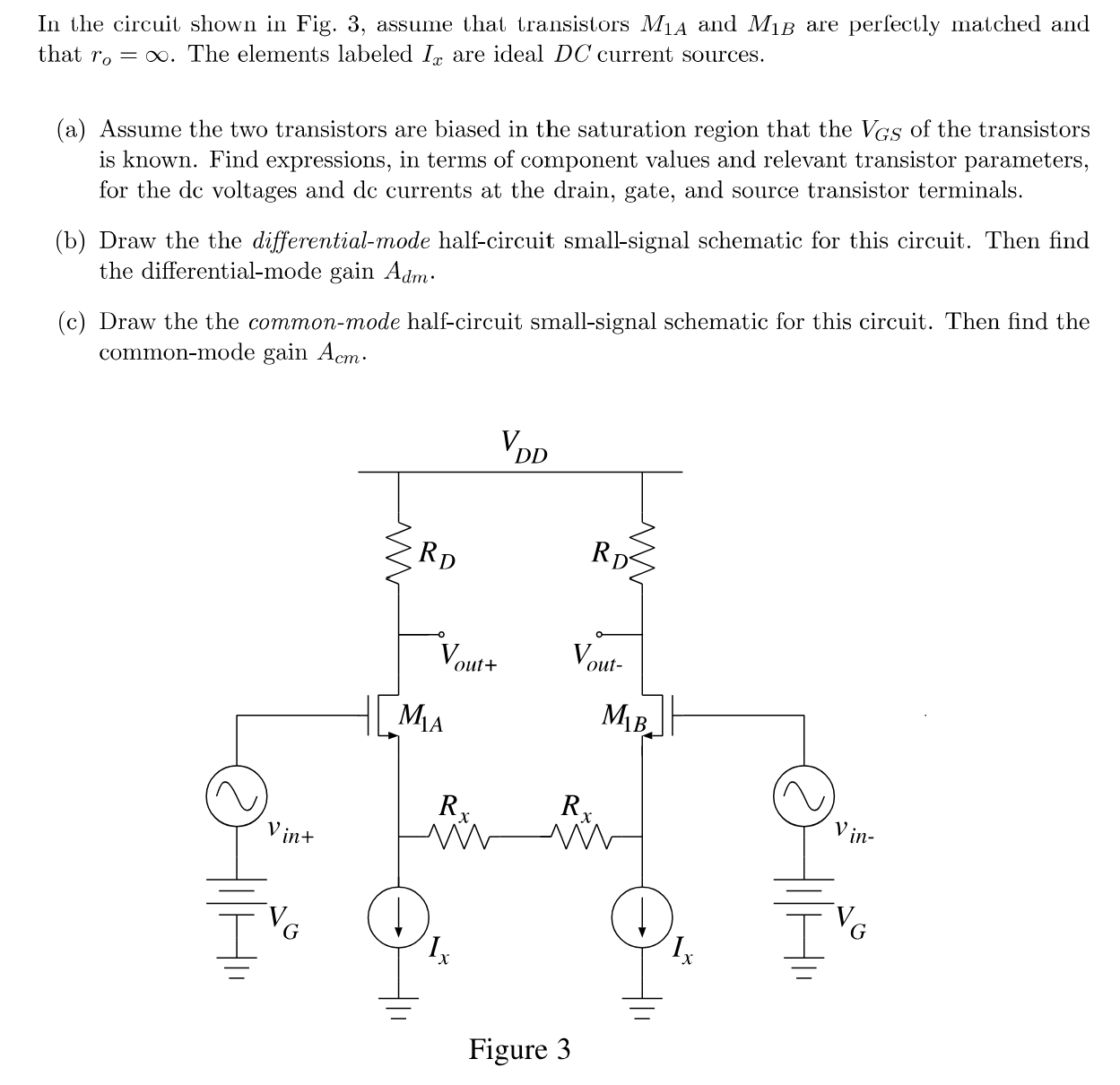In the circuit shown in Fig. 3, assume that transistors M1 A and M1 B are perfectly matched and that ro = ∞. The elements labeled Ix are ideal DC current sources. (a) Assume the two transistors are biased in the saturation region that the VGS of the transistors is known. Find expressions, in terms of component values and relevant transistor parameters, for the dc voltages and dc currents at the drain, gate, and source transistor terminals. (b) Draw the the differential-mode half-circuit small-signal schematic for this circuit. Then find the differential-mode gain Adm. (c) Draw the the common-mode half-circuit small-signal schematic for this circuit. Then find the common-mode gain Acm. Figure 3
